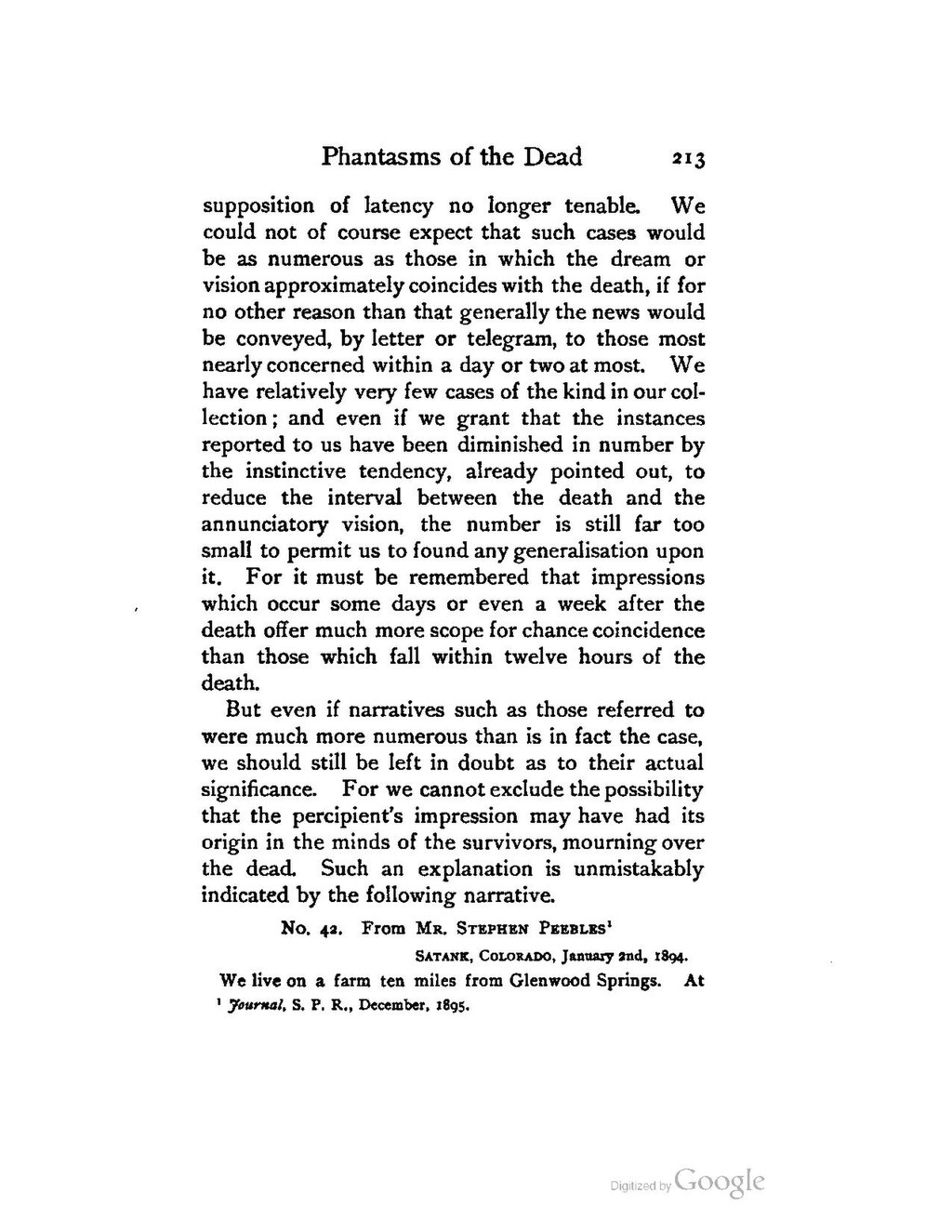supposition of latency no longer tenable. We could not of course expect that such cases would be as numerous as those in which the dream or vision approximately coincides with the death, if for no other reason than that generally the news would be conveyed, by letter or telegram, to those most nearly concerned within a day or two at most. We have relatively very few cases of the kind in our collection; and even if we grant that the instances reported to us have been diminished in number by the instinctive tendency, already pointed out, to reduce the interval between the death and the annunciatory vision, the number is still far too small to permit us to found any generalisation upon it. For it must be remembered that impressions which occur some days or even a week after the death offer much more scope for chance coincidence than those which fall within twelve hours of the death.
But even if narratives such as those referred to were much more numerous than is in fact the case, we should still be left in doubt as to their actual significance. For we cannot exclude the possibility that the percipient's impression may have had its origin in the minds of the survivors, mourning over the dead. Such an explanation is unmistakably indicated by the following narrative.
No. 42. From Mr. Stephen Peebles[1]
- ↑ Journal, S. P. R., December, 1895.
